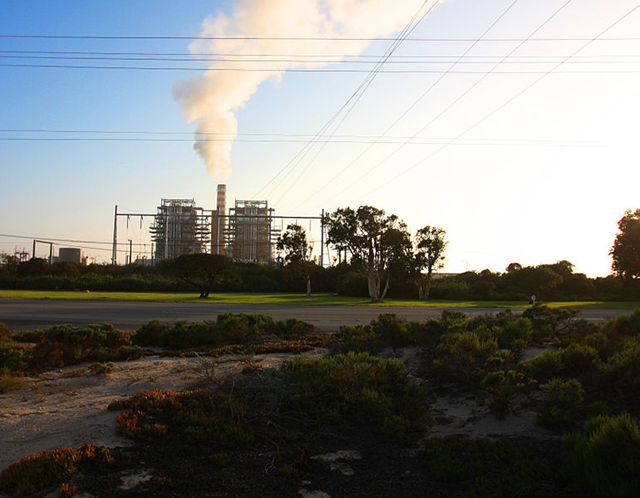Carbon dioxide and the Earth biome – Research uncovers new data
By Melissa Hathaway, guest blogger
14 June 2013
It has been well publicized over the last 30 – 40 years that carbon dioxide is driving the greenhouse effect, resulting in: global warming; carbon cycle imbalances; the melting of the polar caps; and changes to the deep sea currents which carry warm water from the equator towards the poles and colder water from the poles towards the equator. We also know that carbon dioxide emissions from fuels have reached an all time global high at 31.6 billion tons for 2012. Although the media focus is usually on carbon dioxide as the driver behind the greenhouse effect, it is not the only player in the game. Water vapor and methane are also important gases in the equation, together with nitrous oxide and fluorinated gases. That said, with carbon dioxide comprising 84% of total greenhouse gas emissions, how we manage to combat the environmental effects of the ongoing extraction from the deep rock carbon reservoir or otherwise transfer our dependence away from fossil fuels is of paramount importance. When it comes to offsetting the effects of the release of vast quantities of carbon dioxide into the environment, what does the planet itself as a biome do to adjust the levels of carbon dioxide? Are there any benefits to the increase in carbon dioxide in relation to flora and fauna?Absorption of Carbon Dioxide
NASA tells us that the land plants and ocean have absorbed around 55% of the carbon dioxide that Man has released into the atmosphere. Of the 45% still remaining, around 25% is likely to be taken up eventually, but it is thought that around 20% is likely to remain in the atmosphere for thousands of years. Studies of the effects of increased carbon dioxide on plants have found increases of an average 40% in leaf photosynthesis. Levels of carbon dioxide are important in the regulation of the stomata which govern the amounts of gasses able to diffuse into the leaf. It was found that increased levels of CO2 had the effect of decreasing plant respiration by around 22%, with a decrease in whole plant water use of between 5-20%. The consequent increase in plant growth is reflected in the improved harvest of crops such as soybean, rice, and wheat. It was found that the elevated CO2 levels caused changes in the levels of nitrogen, magnesium, phosphorus, and calcium in plants and it is thought that this will lead to increased consumption of plants by herbivores as they compensate for poorer nutrient herbage by eating more. The experiments conducted indicated that there is likely to be an effect on human nutrition as well, with protein concentrations in a number of crops decreasing under the effects of higher levels of carbon dioxide.
As far as marine life is concerned, new research is set to change the way in which carbon dioxide storage in the oceans is regarded. One of the fundamental principles on which estimates of marine carbon storage was based has been found to be flawed. The Redfield ratio states that when nutrients are not limiting, ocean micro-organisms always have the same ratio of three elements, namely carbon, nitrogen, and phosphorus. This principle has been used in scientific circles to understand the ocean cycles of nitrogen and carbon and the finding that the principle is not a constant but a variable means that many climate models are now inaccurate. With models having predicted that warming oceans would take up less carbon dioxide, it now seems that the opposite will be the case. In warm zones, closer to the equator and with lower nutrients, the ratio of carbon to nitrogen to phosphorus was found to be 195:28:1; while at higher latitudes, in colder nutrient-enriched water, the ratio was found to be 78:13:1. The Redfield ratio worked on a constant of 106:16:1 throughout the oceans. Previous models have proposed that as oceans warmed, less carbon would be taken up by phytoplankton as these micro-organisms would remain smaller in the warmer water. It is now thought that with regional variations between latitudes, phytoplankton may actually take more carbon with them as they sink to the ocean floor, depending on their location. It will be interesting to see the new models emerge for the sustenance of marine life in the changing chemistry of the oceans as this new information is taken on board and assimilated into existing data sets.
Measures to Restrict Marine Pollution
Scripps Institution of Oceanography has been involved in marine research since 1907. UC San Diego has one of the largest academic research fleets in the world and has a pivotal role in the ongoing global research. With cruises to many different locations in the world, as well as home based research, their contribution to understanding how to combat the effects of boat pollution on ocean warming and carbon dioxide sinks is vital. Of course another aspect of marine pollution is that of ocean going vessels, whether research ships, cruise liners or commercial shipping. The International Maritime Organization (IMO) has introduced a raft of new regulation, designed to make marine traffic greener. These include a requirement for cleaner fuel, as well as reductions in carbon dioxide emissions; and the IMO are planning on introducing rules governing the cleanup of ships ballast water, which may come into effect this year. In the meantime, European Parliament’s environment committee has supported proposals for recycling levies on vessels entering European ports. The intent is to fund safer scrapping of old ships which may have toxic materials such as asbestos in their construction.
Carbon Dioxide and the Earth biome – Research uncovers new data

